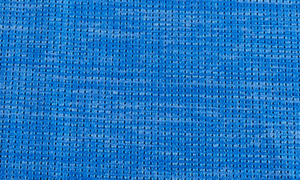In today’s fast-paced industrial landscape, sustainability is more than just a trend—it’s a necessity. Businesses across the globe are actively seeking innovative technologies that can help them minimize environmental impact while maintaining production quality and efficiency. One standout innovation driving this shift is laser cutting technology, particularly as developed and refined by Dowell Laser.
The Green Promise of Laser Cutting
Traditional manufacturing methods, such as mechanical cutting, milling, and stamping, often produce significant material waste, consume large amounts of energy, and require frequent tool replacements. In contrast, laser cutting represents a sustainable breakthrough in precision engineering. By using focused beams of light to cut through metals and other materials, it offers unmatched accuracy and minimal waste generation.
When compared to conventional techniques, laser cutting eliminates the need for physical contact with the material, reducing friction and wear. This means fewer resources are wasted on replacing tools and parts. Moreover, the energy used during laser cutting is directed precisely where it’s needed—making it far more efficient than older, more energy-hungry processes.
Dowell Laser: Pioneering Sustainability Through Innovation
As a global leader in laser technology, Dowell Laser has played a key role in redefining what sustainable manufacturing looks like. The company’s advanced laser systems are engineered to deliver high precision, reduced energy consumption, and significantly lower carbon emissions.
The high-efficiency metal cutting solution from Dowell Laser demonstrates how cutting-edge design and eco-conscious engineering can work hand in hand. This solution allows manufacturers to cut thick and thin metals alike with remarkable speed and minimal waste. By optimizing beam focus and power distribution, Dowell Laser ensures that energy is used effectively, reducing both operating costs and environmental impact.
How Laser Cutting Minimizes Waste
Laser cutting’s ability to reduce waste stems from its precision. The laser’s narrow kerf (cut width) allows manufacturers to utilize more of each material sheet, maximizing yield and minimizing scrap. Additionally, the technology’s capability to handle intricate designs ensures that complex parts can be produced with minimal excess material.
Furthermore, because laser cutting does not rely on physical force or mechanical abrasion, there’s no deformation of materials. This precision ensures that each cut is clean, smooth, and ready for assembly or finishing—further reducing the need for rework or additional processing.
For companies looking to adopt sustainable practices, Dowell Laser’s approach provides a clear path forward. By integrating Dowell Laser large format laser cutter systems, manufacturers can optimize resource use, lower production waste, and reduce their overall environmental footprint—all while maintaining the highest standards of quality.
Energy Efficiency: The Heart of Laser Sustainability
One of the main reasons laser cutting supports sustainable manufacturing is its energy efficiency. Traditional fabrication methods often consume excess power to operate mechanical parts, generate heat, or maintain high-pressure systems. In contrast, laser cutting systems from Dowell Laser are designed with energy optimization at their core.
Modern laser technology converts electrical energy directly into a concentrated beam of light. This conversion process is highly efficient, ensuring that nearly all energy is used for the cutting action itself. Moreover, Dowell Laser’s advanced cooling systems further enhance energy conservation by maintaining optimal operating temperatures with minimal resource use.
By combining intelligent design with efficient energy management, Dowell Laser helps manufacturers achieve both eco-friendly production and significant cost savings—two goals that are often difficult to balance in traditional manufacturing setups.
Supporting a Circular Economy
Sustainability in manufacturing extends beyond energy and waste—it also supports the broader concept of a circular economy, where materials and resources are reused, recycled, or repurposed. Laser cutting contributes to this model by enabling precise disassembly, customization, and refurbishment of components.
Dowell Laser’s cutting solutions allow manufacturers to design parts that are easier to reuse or recycle, promoting responsible resource management. For example, high-precision cutting ensures that leftover metal pieces can be reprocessed efficiently, reducing landfill contributions and promoting long-term sustainability.
The Future of Manufacturing is Clean and Efficient
As industries continue to evolve, sustainability will remain a top priority for manufacturers worldwide. Laser cutting—especially the innovative solutions offered by Dowell Laser—represents a powerful way forward. By combining precision, efficiency, and environmental responsibility, this technology allows businesses to stay competitive while supporting a greener planet.
From small fabrication shops to large industrial plants, integrating sustainable technologies like Dowell Laser’s systems can lead to lower carbon footprints, improved profitability, and enhanced brand reputation. In short, it’s not just a smarter choice for the environment—it’s a strategic advantage for any modern manufacturer.
Conclusion
Sustainable manufacturing is no longer optional—it’s the foundation of the future industrial world. With innovations like the high-efficiency metal cutting solution from Dowell Laser, companies can achieve exceptional performance while reducing energy use and waste. Whether it’s through adopting a Dowell Laser large format laser cutter or implementing customized sustainability solutions, Dowell Laser continues to lead the charge in environmentally responsible production.





























